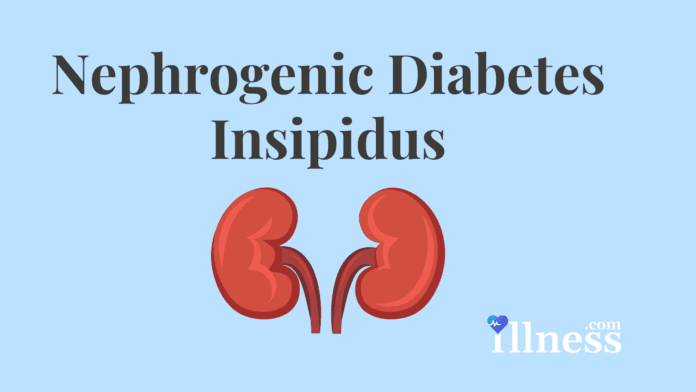Overview Of Nephrogenic Diabetes Insipidus
Nephrogenic diabetes insipidus (DI) is an uncommon condition in which the kidneys are unable to prevent the excretion of water.
DI is not the same as diabetes mellitus types 1 and 2. However, untreated, both DI and diabetes mellitus causes constant thirst and frequent urination. People with diabetes mellitus have high blood sugar (glucose) because the body is not able to use blood sugar for energy. Those with DI have normal blood sugar levels, but their kidneys are not able to balance fluid in the body.
Causes Of Nephrogenic Diabetes Insipidus
During the day, your kidneys filter all your blood many times. Normally, most of the water is reabsorbed, and only a small amount of concentrated urine is excreted. DI occurs when the kidneys cannot concentrate the urine normally, and a large amount of dilute urine is excreted.
The amount of water excreted in the urine is controlled by antidiuretic hormone (ADH). ADH is also called vasopressin. ADH is produced in a part of the brain called the hypothalamus. It is then stored and released from the pituitary gland. This is a small gland just below the base of the brain.
DI caused by a lack of ADH is called central diabetes insipidus. When DI is caused by a failure of the kidneys to respond to ADH, the condition is called nephrogenic diabetes insipidus. Nephrogenic means related to the kidney.
Central DI can be caused by damage to the hypothalamus or pituitary gland as a result of:
- Genetic problems
- Head injury
- Infection
- Problem with the ADH-producing cells due to an autoimmune disease
- Loss of blood supply to the pituitary gland
- Surgery in the area of the pituitary gland or hypothalamus
- Tumors in or near the pituitary gland
Nephrogenic DI involves a defect in the kidneys. As a result, the kidneys do not respond to ADH.
Like central DI, nephrogenic diabetes insipidus is very rare. Nephrogenic DI may be caused by:
- Certain medicines, such as lithium
- Genetic problems
- High level of calcium in the body (hypercalcemia)
- Kidney disease, such as polycystic kidney disease
Symptoms
Symptoms of DI include:
- Excessive thirst that may be intense or uncontrollable, usually with the need to drink large amounts of water or craving for ice water
- Excessive urine volume
- Excessive urination, often needing to urinate every hour throughout the day and night
- Very dilute, pale urine
Exams & Tests
The health care provider will ask about your medical history and symptoms.
Tests for nephrogenic diabetes insipidus that may be ordered include:
- Blood sodium and osmolality
- Desmopressin (DDAVP) challenge
- MRI of the head
- Urinalysis
- Urine concentration and osmolality
- Urine output
- Your provider may have you see a doctor who specializes in pituitary diseases to help diagnose DI.
Treatment Of Nephrogenic Diabetes Insipidus
The cause of the underlying condition will be treated when possible.
Central DI may be controlled with vasopressin (desmopressin, DDAVP). You take vasopressin as an injection, a nasal spray, or tablets.
If nephrogenic DI is caused by medicine, stopping the medicine may help restore normal kidney function. But after many years of use of some medicines, such as lithium, nephrogenic DI can be permanent.
Hereditary nephrogenic DI and lithium-induced nephrogenic DI are treated by drinking enough fluids to match urine output. Medicines that lower urine output also needs to be taken.
Nephrogenic DI is treated with anti-inflammatory medicines and diuretics (water pills).



